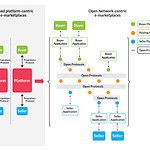A new discussion document authored by Shailesh Chitnis provides a pragmatic assessment of India’s capabilities in Artificial Intelligence (AI) today. It proposes one bold idea which, if properly executed, has the potential to catapult the country into a dominant position in the AI race. But why another document about AI strategy for India? The expert from the document is provided below.
Most reports on AI in India follow a predictable pattern. First, they fuss over the potential of AI to alter every aspect of society and the economy. Next, they present eye-watering numbers on the impact of AI on India’s economy. Finally, there’s a mild caution against missing out on this once-in-a-generation boom.
Left unsaid are the steps needed to get there. This is not such a report. It assumes that the reader is astute enough to know the transformational nature of AI. The reader also agrees that over time, this general-purpose technology will permeate every aspect of our lives. The extent of change depends on how successful we are in adopting this technology. But no one, this report hopes, needs to be convinced of the potential pay-off with AI. Instead, this short paper is focused on that space between strategy and outcome, namely execution. It deliberately takes a near-term – three to five years – view in its analysis, since the intent is to spur action.
The problem: Staying behind in the AI race
India is languishing at the bottom of the artificial intelligence (AI) leaderboard when compared with its G20 peers. Other than exporting our best brains, our contributions have been tiny. Even as the gap between the United States and China on one side, and everyone else on the other widens, India's policymakers, researchers, and business leaders have shown little urgency.
The first AI strategy document by the government was released in 2018, a year or so after China had released its detailed, target-linked AI plan. Five years later, India is still in the strategy and consultation phase, while China has left us behind.
We need to shift gears. Our research surveyed the state of AI in India and evaluated various policy options. While there are many recommendations that can be made, we prefer those that are immediate and agile.
Our big idea: BharatAI
AI is mainstream. And, as the preceding sections have demonstrated, India needs to catch up. Fast. Industry leaders can wait for guidance from the government on a roadmap, with defined milestones, ample funds, and coordinated action among industry, the public sector, and academia. But India is not China. Disruptive change will come from the private sector. One approach is to launch a privately funded research lab that works on foundational models for AI. We call this lab BharatAI.
This company, BharatAI, has the potential to become the hub of India's AI innovation ecosystem. Our initial estimate calls is for an investment of roughly $250 million over five years. But an unproven company that requires over $250 mn over five years with no defined product or revenue won’t be flush with investor cash. The mismatch between high upfront costs and a long horizon to recoup the investments, requires patient capital. Hence we propose a pooled investment approach. Similar to a venture capital (VC) fund, BharatAI’s investors will resemble limited partners (LPs) that park their money into this venture for a defined period, say 10 years. In return, they buy equity into the firm but are not involved in the company’s management.
Investors into this company can be of three types.
a. Strategic investment from India's large technology services companies
b. Venture capital funds
c. Private endowments
The company will also have two other backers who will be critical for its success: a platform partner and the government.
The company itself would focus on foundational AI problems with broad applicability. BharatAI should not attempt to develop end-to-end applications. It should instead provide tools through application programming interfaces (APIs) and open-source or licence its models.
A single company, however, can not alter India’s AI trajectory. But it can make a sizeable dent in our efforts to overcome our handicaps.
BharatAI can serve as a talent magnet for high-quality, high-demand engineers. A research lab that is closely tied to industry will also promote a culture of privately-led innovation. Finally, the Indian government is keen on expanding India stack – a set of open APIs and public digital goods – globally. Having an AI layer in the stack that offers countries an alternative to Big Tech capture will be a big benefit.
The full document can be found here: https://takshashila.org.in/research/rebooting-ai-india













Share this post